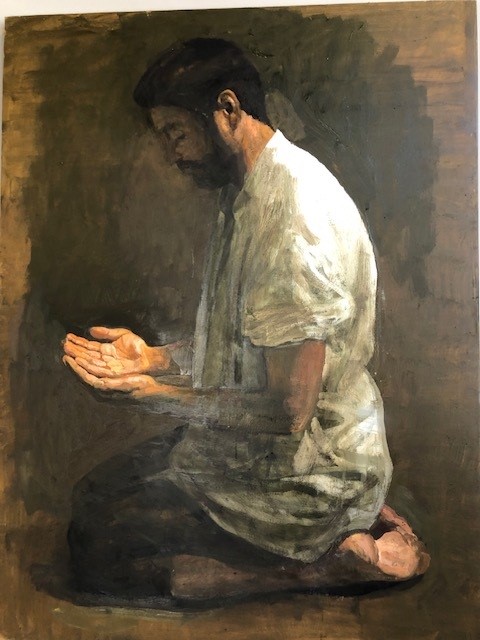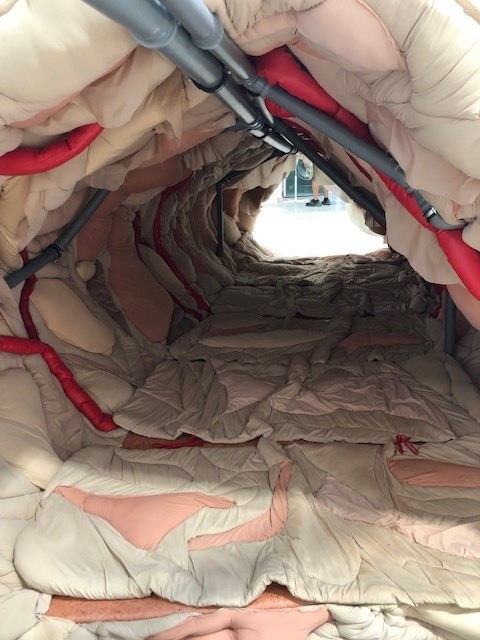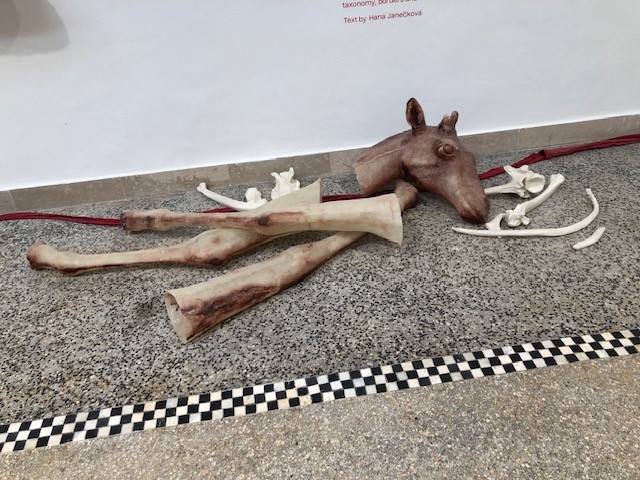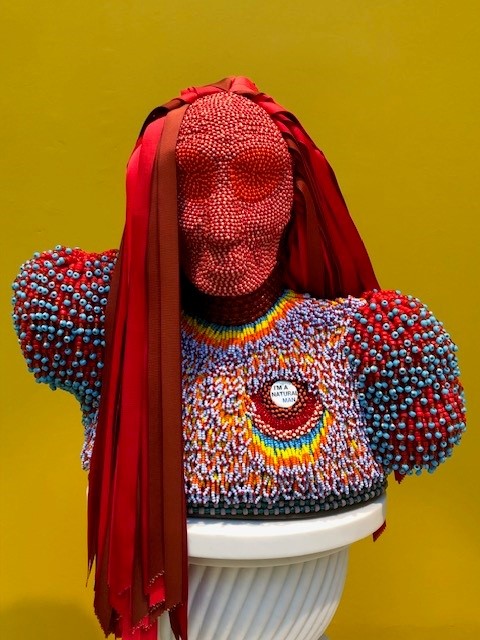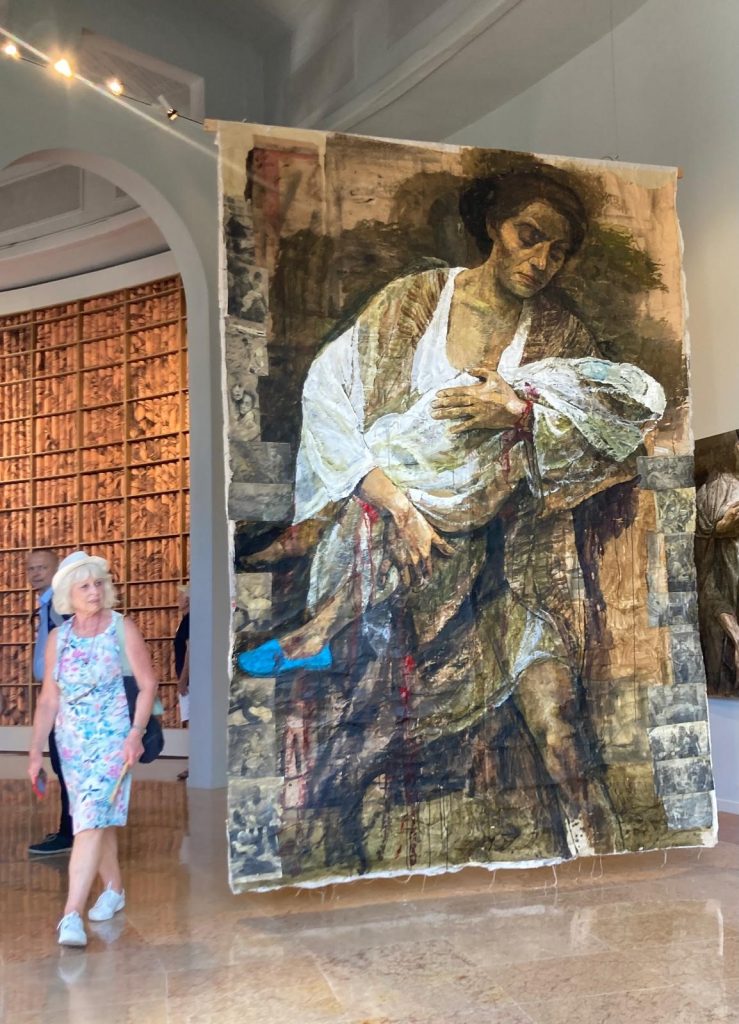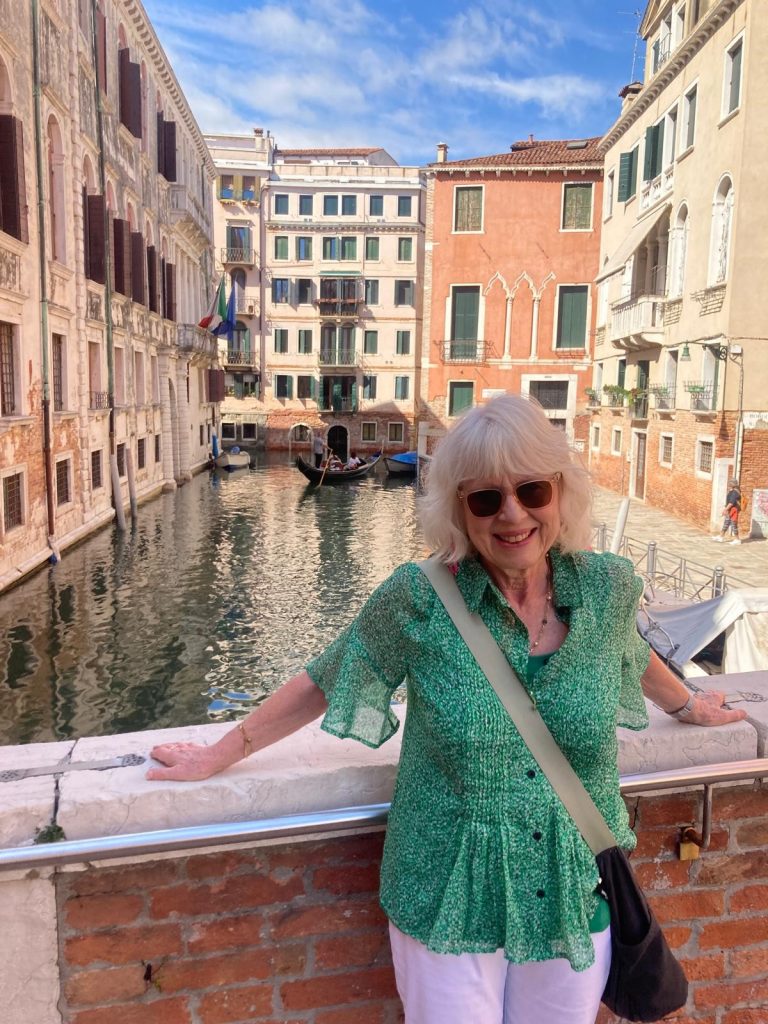The 60th International Art Exhibition, Venice 2024
We have been coming to Venice regularly since the early 2000s when our eldest son was a fine art student and could enthusiastically talk us through the merits of some of the more obscure submissions on show at the biennial international contemporary art exhibition. We were instantly hooked and have returned many times to repeat the experience but latterly without our knowledgeable guide in tow.
The two main venues for the show are terrific – one a fabulous garden, (Giardini) with 30 national pavilions, the second, a complex of historical shipyards and armouries (Arsenale), formerly the powerhouse of Venetian naval power and now transformed into a multitude of gallery spaces. In addition, there are usually a substantial number of free art shows dotted around the city in churches, palaces, workshop spaces down unlikely narrow alleys and one year, famously above a supermarket. For a perfect experience all you need is good weather, a ticket that permits entry to the two main venues over consecutive days and an inclination to mooch. The art and how it speaks to you ultimately determines the pace.
I always look forward to discovering my personal wows but accept there will be much that leaves me cold. Don’t like what’s on show at this pavilion? Move on. Hopefully, the sun is shining and you’re in Venice is my attitude and it’s best not to take it all too seriously. There are always laughs to be had, even if the artist doesn’t intend them. One year I recall watching a two-hour video in which the artist, Mark Wallinger roams the lobby of a gallery at night dressed in a bear suit. It was riveting and ludicrous. Once upon a time these antics would have been regarded as avant-garde. Now, a bit old hat.
Potent Global Theme
The exhibition always has an overarching theme and in past years has been so open to interpretation as to be virtually meaningless. The Milk of Dreams, May You Live in Interesting Times and Think with your Senses, Feel with your Mind are recent examples. I only learned this year that the artists are not obliged to adhere to the given theme, but this year’s provocative choice of Foreigners Everywhere (Stranieri Ovunque), not only resonated with me as a visitor to the exhibition, but also in the city and seaport of Trieste and even on our route towards the Slovenian capital, Ljubljana.
Who are the foreigners? For a living, breathing, but fragile, visitor attraction like Venice, that’s just about everyone, most of the time. Born and bred Venetians are an increasingly rare breed with Chinese property investment plus tourism creating a two-headed beast. The tax revenue to the city might be welcome but the impact vast visitor numbers inevitably have on the lagoon environment remains a concern. Hence the move to ban the cruise ships and their populations of day trippers from Venice. Now, they dock and discharge their human cargo in Trieste which is probably better suited to such an onslaught.
Artistic statements alluding to the movement of people, borders, integration, invasion, occupation, alienation, prejudice, war, colonialism, nationalism, and identity are always well represented with the emphasis reflecting the zeitgeist. This time, gender fluidity or maybe confusion, is well to the fore and celebrated in sculpture, painting, and a few self-indulgent films and if that’s your thing there is plenty of it.
More pertinent to my mind is the artwork that made me consider how we view migrants and refugees who leave their homeland, for whatever reason, in search of the kind of life they think we live. We never consider what it’s like for them to journey through unknown countries and across many borders when everyone they encounter is a foreigner to them! I am thinking particularly of the groups of listless young men I saw gathered in the park opposite Trieste railway station, some with back packs, others with bin liners of possessions at their feet. Waiting for their lives to begin but invisible to passers-by. Or a similar group, static and silent on the steps of Postojna train station in Slovenia. The town has a notorious detention centre for asylum seekers entering the country from Croatia and Bosnia, via the so-called Balkan route. Do they feel disappointed? Disillusioned? Regretful? Lonely?
The Mapping Journey Project by Moroccan artist Bouchra Khalili captures untold refugee stories in stark visual language. An installation of eight giant screens show maps of different parts of the world and a hand, marking in black pen, endless, illegal journeys across many borders leading to Europe. Their words chart difficult, convoluted routes and the risks taken to fulfil basic human needs. It’s hard to walk away and the straightforward presentation makes this, for me, far more powerful than the verbose text that accompanies too many of the submissions. If you have to go to great lengths to explain your artistic concept so visitors ‘get it’ then maybe rethink your concept.
A playful, upholstered tunnel forms the centrepiece of Eva Kotatkova’s artwork for the Czech pavilion and is intriguing, yet impressively clear on the wider questions it poses on the culture of plucking animals from their natural habitat to keep them in captivity. The heart of a giraffe in captivity is twelve kilos lighter tells the story of Lenka, a giraffe captured in Kenya for Prague Zoo in 1954, where she died just two years later.
Real World Realities
As two years ago and with the invasion of Ukraine still ongoing, the Russian Federation’s pavilion in the Giardini remains firmly closed whilst a collective of Ukrainian artists at both venues are defiantly present. Repeat After Me II, in the Polish pavilion features a video demonstration by Ukrainian refugees imitating the sounds of Russian mortar shelling and aerial bombardment. Visitors are invited to join in, karaoke-style. I wonder if anyone ever does.
In past years Israel has been the standout highlight for me with absorbing shows that succeeded in making artistic statements in novel ways. For example, in 2019, the entire Israeli pavilion was transformed into a field hospital, with visitors cleverly processed through the exhibition, first as patients, and then as listeners to stories of injustice. Forward to 2024 and armed guards keep a watchful eye for protesters as visitors read a notice announcing Israel’s exhibition will remain closed until a ceasefire and hostage release agreement is reached in Gaza. Whilst the sentiment is noble I can’t help feeling that presenting a closed door to a global audience is a wasted opportunity.
Lasting Impressions
The Japanese pavilion can usually be relied on for quirkiness and this year’s presentation didn’t disappoint. Sculptor Yuko Mohr unusually built her array of Heath Robinson-style ‘machines’ onsite, with materials and objects sourced from the local area. The awkward movement of water through the various bits of piping and other discarded items is the catalyst for tinkling chimes. Hardly unique. More peculiar was the pervading smell from displays of decomposing fruit. These wrinkled items are stabbed with electrodes to convert the moisture they contain into electric signals, creating an intermittent sound and flickering light. It was certainly a full-on sensory experience.

The Korean pavilion took this idea even further with an exploration of how scents, smells and odours are linked to memories, culminating in an arresting bronze baby, discharging a sickly milky smell from its nostrils every two minutes. Make it stop was my honest response.
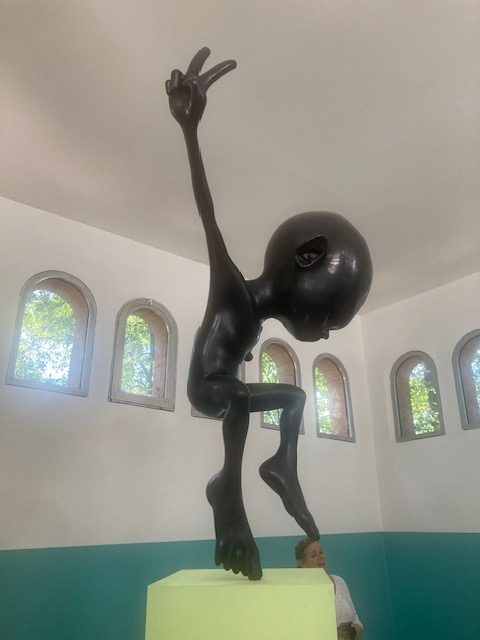
For sheer impact through colour, texture and size, Jeffrey Gibson’s paintings and sculpture on show outside the American pavilion are a magnetic draw. Inside, the vibrant patterns and gorgeous beaded figures call to mind the artist’s first nation ancestry. No doubt the artist has more lofty thoughts on his own work but sometimes, aesthetics are all that matters.
Safet Zec’s astounding figurative paintings in the Venice pavilion are breathtaking. Perfectly aligned with the theme, his moving images reflect exodus and heartbreak based on his own experience. He says, “I would like to recall that I was a refugee, a man who had to leave the country he loved, the country where he was born, lived, educated, and studied… a country torn apart by war and nationalism. In the former Yugoslavia I was established and had acquired a prestigious position in the world of painting, which I now also enjoy in Venice, my beloved adopted city.”
Bravo Safet Zec. For me, the star of the show. Thought-provoking contemporary art needs a new movement. Let it start with beauty.
The 60th International Art Exhibition continues in Venice to Sunday, 24th November 2024
